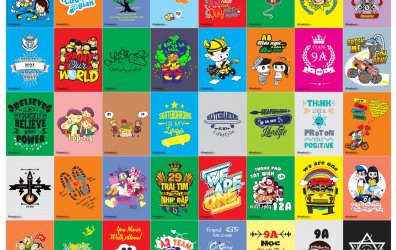V
vikram kumar
So, I’ve been trying to figure out how people actually make insurance advertising work without wasting a ton of money. I mean, it’s one of those tricky niches where you can’t just throw a catchy line and expect conversions. A few months back, I was running some ads for a small local insurance firm, and honestly, I felt completely lost. Clicks were coming in, but the ROI was flat.
That’s when I started wondering if I was missing some kind of “pro-level” approach that seasoned advertisers use to get better results. Turns out, there’s a lot more to insurance ads than just good visuals and targeting — it’s about understanding buyer psychology, timing, and trust.
When I First Got Into Insurance Advertising
When I first got into this space, I thought it would be like any other PPC or social ad campaign — set the budget, pick keywords, write an ad, and done. But nope. Insurance advertising is a different game altogether. People don’t usually click just because they like your ad; they click because they need something and they want to feel safe choosing it.
The first challenge I hit was that leads were super expensive. The CPC (cost per click) in this niche can go sky-high, especially on platforms like Google Ads. Even when I tried social media ads, the engagement looked good, but conversions were all over the place.
At that point, I started asking around — in forums, Reddit threads, and LinkedIn groups — to see what others were doing differently. Almost everyone said the same thing: insurance ads need precision targeting and clear intent-based messaging.
What Didn’t Work for Me
At first, I tried a few “generic” ad techniques. You know — broad keywords like “best insurance,” “affordable coverage,” or “compare policies.” I thought casting a wide net would get me more eyeballs. Well, it did, but they weren’t the right eyeballs.
Most of those clicks came from people still in the research stage, not ready to sign up or request a quote. I also tested emotional messaging, like “protect your loved ones today,” but again, that didn’t translate into real conversions. It sounded nice but lacked focus.
The other mistake I made was not optimizing my landing page. I used a single-page design with too much text, thinking more info meant more trust. Instead, it made people bounce.
What Started to Work Better
After a lot of trial and error, I realized that the key to better ROI in insurance advertising was to combine audience segmentation with clarity. Instead of targeting everyone, I broke my audience into smaller groups — like first-time policy seekers, homeowners, small business owners, and so on.
Then I tweaked my ad copy for each group. For instance, for homeowners, the focus shifted to “protecting property value” and for business owners, it was about “risk coverage.” Suddenly, I started noticing that my CPC went down slightly, and the quality of leads improved.
Also, A/B testing became my best friend. I started testing different ad headlines, visuals, and CTA lines every week. It’s funny how small changes like switching from “Get a Quote” to “See Your Coverage Options” made a noticeable difference.
Another big factor was timing. Insurance is a decision-heavy purchase. I found that running retargeting ads worked far better than trying to convert cold traffic right away. Once people saw my brand a few times, they were much more likely to click and fill out a form.
The Strategy That Finally Made Sense
One thing that really helped me understand the full picture was reading up on other marketers’ experiences. I came across an article called Pro-Level Insurance Ads Techniques for Better ROI, and it summed up a lot of what I’d been learning through trial and error.
The piece talked about combining behavioral data, targeted messaging, and creative testing — basically, running ads like a performance marketer, not a traditional one. That clicked for me (no pun intended).
I started applying some of those ideas:
What I’d Tell Anyone Starting Out
If you’re new to insurance advertising, here’s what I’d say from personal experience:
I still wouldn’t call myself a pro, but I can definitely say that understanding how real marketers structure their insurance campaigns changed the way I approach ads. If you’re struggling to improve your ROI, digging into pro-level techniques (like the ones in that article I mentioned) might be worth your time.
That’s when I started wondering if I was missing some kind of “pro-level” approach that seasoned advertisers use to get better results. Turns out, there’s a lot more to insurance ads than just good visuals and targeting — it’s about understanding buyer psychology, timing, and trust.
When I First Got Into Insurance Advertising
When I first got into this space, I thought it would be like any other PPC or social ad campaign — set the budget, pick keywords, write an ad, and done. But nope. Insurance advertising is a different game altogether. People don’t usually click just because they like your ad; they click because they need something and they want to feel safe choosing it.
The first challenge I hit was that leads were super expensive. The CPC (cost per click) in this niche can go sky-high, especially on platforms like Google Ads. Even when I tried social media ads, the engagement looked good, but conversions were all over the place.
At that point, I started asking around — in forums, Reddit threads, and LinkedIn groups — to see what others were doing differently. Almost everyone said the same thing: insurance ads need precision targeting and clear intent-based messaging.
What Didn’t Work for Me
At first, I tried a few “generic” ad techniques. You know — broad keywords like “best insurance,” “affordable coverage,” or “compare policies.” I thought casting a wide net would get me more eyeballs. Well, it did, but they weren’t the right eyeballs.
Most of those clicks came from people still in the research stage, not ready to sign up or request a quote. I also tested emotional messaging, like “protect your loved ones today,” but again, that didn’t translate into real conversions. It sounded nice but lacked focus.
The other mistake I made was not optimizing my landing page. I used a single-page design with too much text, thinking more info meant more trust. Instead, it made people bounce.
What Started to Work Better
After a lot of trial and error, I realized that the key to better ROI in insurance advertising was to combine audience segmentation with clarity. Instead of targeting everyone, I broke my audience into smaller groups — like first-time policy seekers, homeowners, small business owners, and so on.
Then I tweaked my ad copy for each group. For instance, for homeowners, the focus shifted to “protecting property value” and for business owners, it was about “risk coverage.” Suddenly, I started noticing that my CPC went down slightly, and the quality of leads improved.
Also, A/B testing became my best friend. I started testing different ad headlines, visuals, and CTA lines every week. It’s funny how small changes like switching from “Get a Quote” to “See Your Coverage Options” made a noticeable difference.
Another big factor was timing. Insurance is a decision-heavy purchase. I found that running retargeting ads worked far better than trying to convert cold traffic right away. Once people saw my brand a few times, they were much more likely to click and fill out a form.
The Strategy That Finally Made Sense
One thing that really helped me understand the full picture was reading up on other marketers’ experiences. I came across an article called Pro-Level Insurance Ads Techniques for Better ROI, and it summed up a lot of what I’d been learning through trial and error.
The piece talked about combining behavioral data, targeted messaging, and creative testing — basically, running ads like a performance marketer, not a traditional one. That clicked for me (no pun intended).
I started applying some of those ideas:
- Using custom intent audiences instead of broad targeting.
- Keeping ad text minimal but direct.
- Focusing more on benefits and clarity than emotional fluff.
What I’d Tell Anyone Starting Out
If you’re new to insurance advertising, here’s what I’d say from personal experience:
- Don’t expect instant results. The first few campaigns are mostly learning phases.
- Focus on user intent — not volume.
- Keep testing your creatives, headlines, and CTAs.
- Invest in retargeting; it’s underrated.
- Study what’s already working in your niche — you’ll save months of trial.
I still wouldn’t call myself a pro, but I can definitely say that understanding how real marketers structure their insurance campaigns changed the way I approach ads. If you’re struggling to improve your ROI, digging into pro-level techniques (like the ones in that article I mentioned) might be worth your time.




